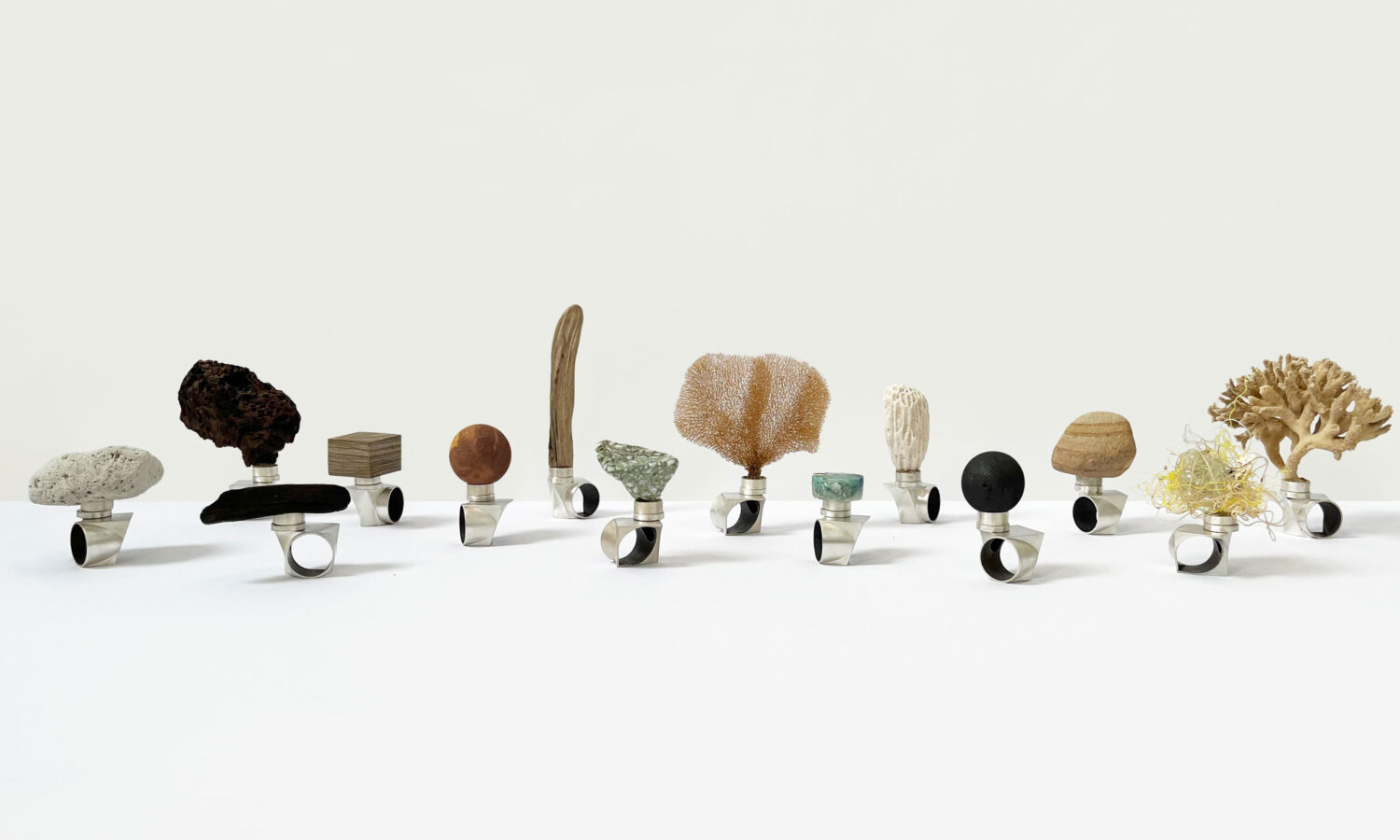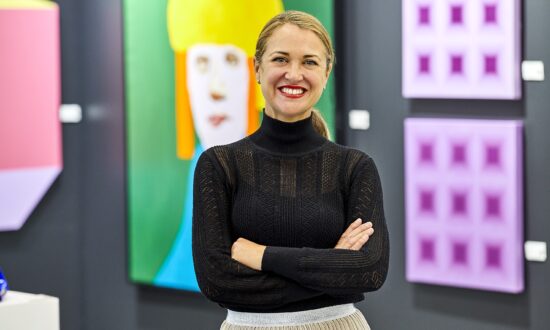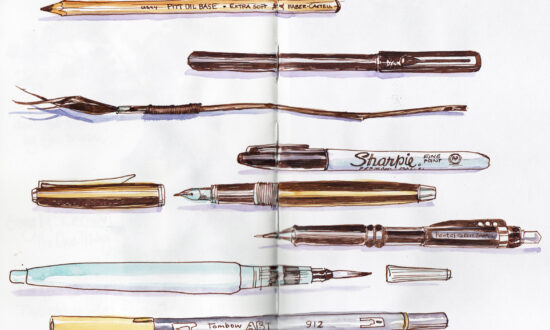The items used in Kyoko Hashimoto and Guy Keulemans’ work, titled Bioregional Rings (Central Coast), were found at beaches, abandoned coal mines and other locations near their former home on the Central Coast of New South Wales. As well as natural materials, they also collected waste marine plastic and fishing line.
“The COVID lockdowns really helped this process as we had more time to comb the beaches of the Central Coast,” the partners said in a statement.
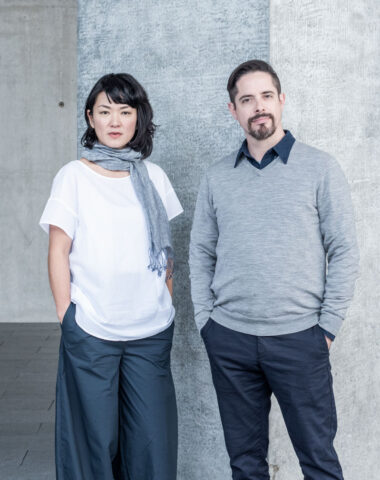
Artists Kyoko Hashimoto and Guy Keulemans.
“Some of these pieces were formed into specific shapes, while others were kept natural to show off their incredible vibrancy.”
Hashimoto says the silver rings are wearable as jewellery, but also function as “tiny plinths”.
Bioregional Rings (Central Coast) was selected as the open category winner from among 71 finalists in the 2022 Waterhouse Natural Science Art Prize, which attracted almost 500 entries.
In announcing the winners last night, the judges said Hashimoto and Keulemans’ work allowed the diversity of media to “artistically speak for itself”.
“Kyoko Hashimoto and Guy Keulemans have created a stunning sculptural ensemble formed from a wide range of natural and found materials from a tightly defined bio-region,” they said.
“These materials derive from geology formed millions of years ago through to wood, natural sponges and marine plastic washed up on the shore.”
The Waterhouse Prize – presented biennially by the South Australian Museum – encourages artists to make a statement about the issues facing the planet, and in this case the artists’ work is intended as a response to globalised supply chains.
“We want designers, artists and industry to think about their supply chains, and the potential of the natural world that is local and close by to provide materials of production,” they explain.
South Australian artist Deb McKay won the $10,000 prize in the emerging artist category of the 2022 Waterhouse Natural Science Art Prize with her porcelain-based work Fragile Forms.
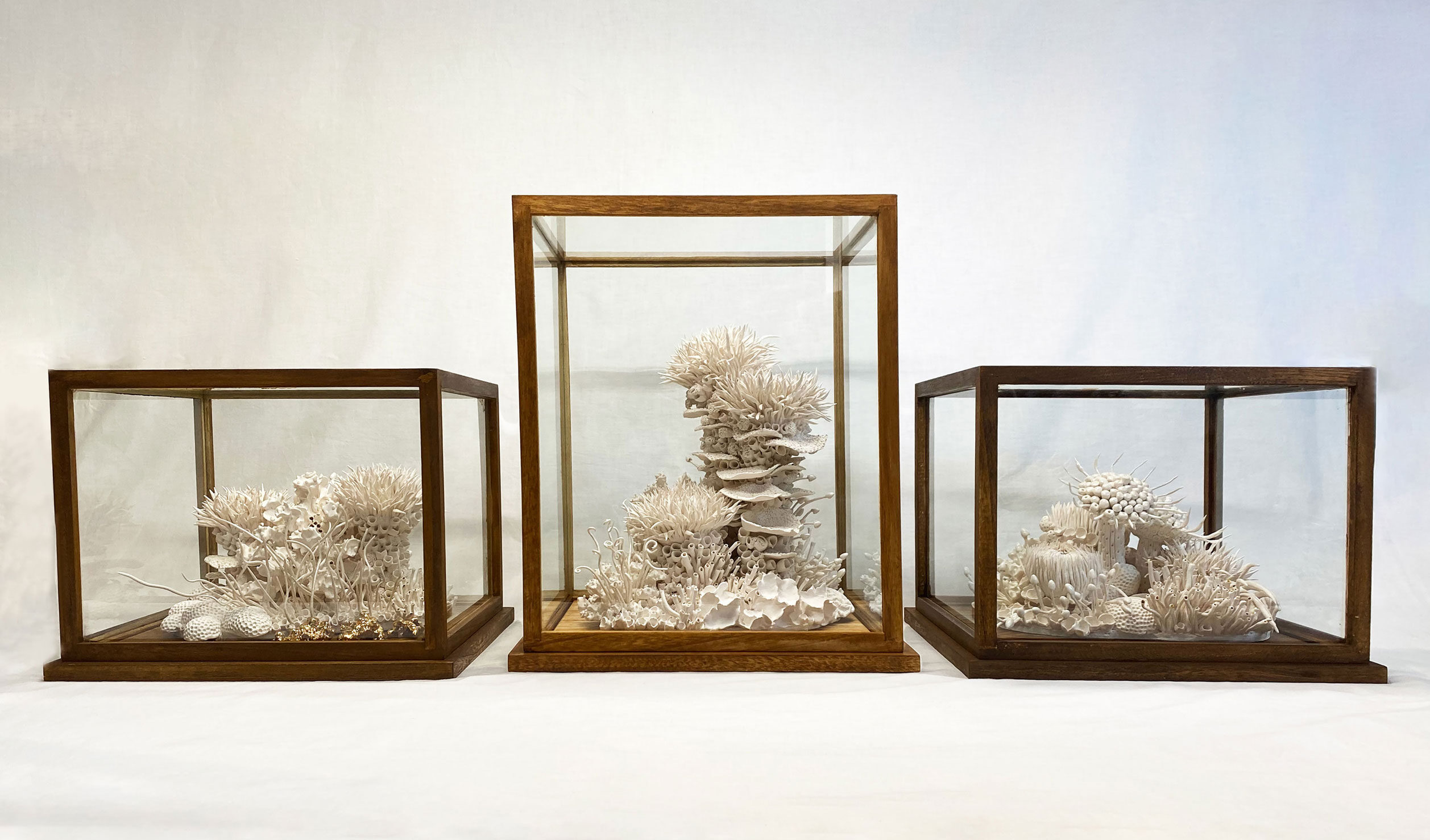
Emerging Artists Prize winner Deb McKay’s Fragile Forms; porcelain, lustre, wooden display case.
The delicate coral-like sculptures which make up Fragile Forms were all built completely by hand and are displayed like museum pieces in a wooden display case. It is intended as a study of “movement, time and ageing”.
“As my body ages I feel a sense of deterioration – there is a parallel between what my body allows and the corroding of the natural world,” says McKay.

Get InReview in your inbox – free each Saturday. Local arts and culture – covered.
Thanks for signing up to the InReview newsletter.
“My work is imagined and at times playful, but the inspiration is always nature.”
An online gallery of all the shortlisted works in the 2022 Waterhouse Natural Science Art Prize can be viewed on the SA Museum website; the finalist exhibition will open at the museum tomorrow (June 4) and run until August 7. Visitors can vote for their favourite artwork for the $5000 people’s choice prize.
Support local arts journalism
Your support will help us continue the important work of InReview in publishing free professional journalism that celebrates, interrogates and amplifies arts and culture in South Australia.
Donate Here
